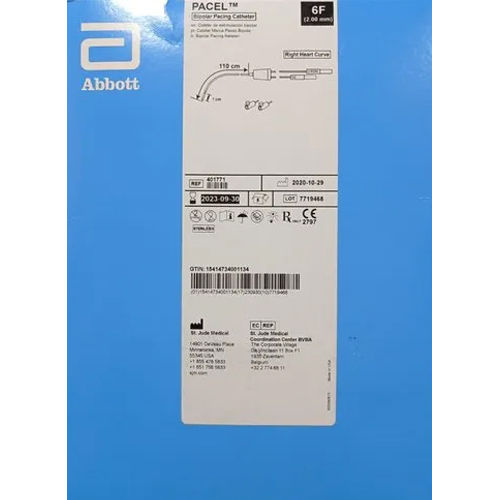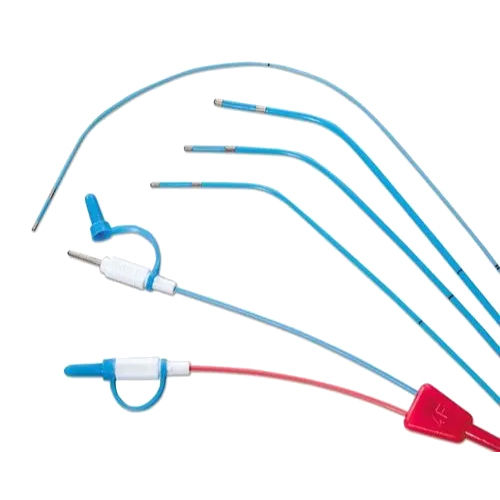Bipolar Pacing Lead 6f
Product Details:
Bipolar Pacing Lead 6f Price And Quantity
- 3800 INR/Piece
- 50 Piece
Bipolar Pacing Lead 6f Trade Information
- 10000 Piece Per Week
- 4 Days
- Asia Australia Central America North America South America Eastern Europe Western Europe Middle East Africa
- All India
Product Description
Plastic Pacing Lead is used in the immediate postoperative cardiac surgery period that is used for the identification, treatment of acute and diagnosis of acute arrhythmias. These are usually removed before discharge that is clipped and left to retract into the skin and are thus retained. Plastic Pacing Lead delivers energy or power to the heart muscle from a pacemaker or implantable cardioverter defibrillator which is a special under the skin that helps keep the patient's heartbeat at a regular pace.
Product details
|
Quantity Per Pack |
5 Pcs |
|
Packaging Type |
Box |
|
Material |
Plastic |
|
Size |
6f |
|
Brand |
Abbott |
|
Usage/Application |
Hospital |
Frequently Asked Questions
Q: Plastic pacing leads are what?
A: A medical called a plastic pacing lead is used in cardiac pacemakers to electrical impulses to the heart and control its rhythm. One of the is attached to the pacemaker generator, while the other is inserted into the heart tissue. They are made of flexible plastic wire with insulation.
Q: What distinguishes plastic pacing leads from conventional pacing leads?
A: Plastic pacing leads are constructed of a flexible plastic substance, unlike traditional pacing leads, which are often made of silicone rubber or metal alloys. Plastic leads include benefits like higher flexibility, less fracture risk, and enhanced patient comfort.
Q: What advantages do plastic pacing leads offer?
A: Pacing leads made of plastic offer various advantages. Because they are more flexible than conventional leads, they can be implanted more easily and pose a lower risk of lead fracture. Additionally, the flexibility improves patient comfort and lowers the chance of tissue damage after implantation. To further reduce the risk of infection, plastic leads may be more resistant to bacterial colonisation.
Q: How safe are plastic pacing leads?
A: Pacing leads made of plastic have been proven to be secure and reliable in clinical settings. They have passed stringent testing and received regulatory agency approval for use in cardiac pacemakers. However, there are potential hazards and difficulties that could arise from using them, just like with any medical, and they should be discussed with a healthcare expert.
Q: How durable are plastic pacing leads?
Q: A number of variables, including the lead's design and the characteristics of the patient, can affect how long plastic pacing leads last. Pacing leads, including plastic leads, often last between 5 and 15 years. It's crucial to remember that every person's experience will be different.




